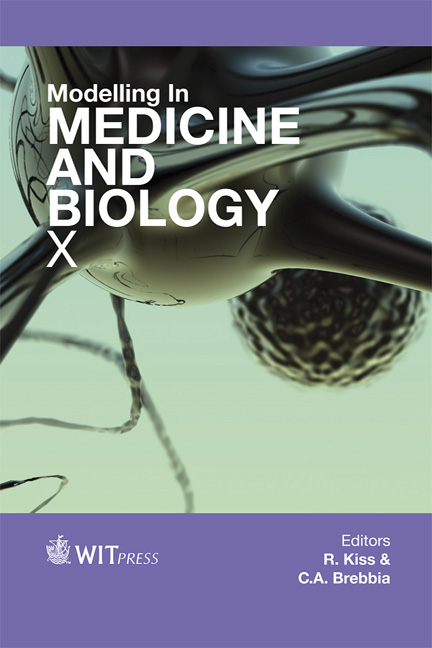Numerical Simulation Of Electromechanical Activity Of The Gastric Smooth Muscle
Price
Free (open access)
Transaction
Volume
17
Pages
10
Page Range
63 - 72
Published
2013
Size
211 kb
Paper DOI
10.2495/BIO130061
Copyright
WIT Press
Author(s)
O. A. Al-Qabandi & R. N. Miftahof
Abstract
A null-dimensional mathematical model of the myoelectrical activity of the gastric smooth muscle (myofiber) is studied numerically. Based on real morphological and electrophysiological data, the model assumes that: the kinetics of L- and T-type Ca2+, Ca2+ -activated K+, voltage dependent K+ and Clchannels determines the electrical activity of the myofiber; the enteric nervous system is represented by the primary sensory and motor neurons; the pacemaker input is provided by the interstitial cells of Cajal through receptor linked L-type Ca2+channels located on the smooth muscle membrane. The dynamics of propagation of the wave of depolarization along the unmyelinated nerve axons satisfy the Hodgkin-Huxley model; the electrical activity of the neural soma reflects the interaction of N-type Ca2+ channels, Ca2+ -activated K+ and voltage dependent Na+, K+ and Cl- channels; and the smooth muscle is modeled as a nulldimensional contractile system which dynamics is determined entirely by the concentration of cytosolic calcium. The model reproduces: the mechanical excitation of the free nerve endings of the mechanoreceptor of the receptive field of the pathway; the electrical processes of the propagation of excitation along the afferent and efferent neural circuits; the chemical mechanisms of nerve-pulse transmission at the synaptic zones; the slow wave and bursting type electrical activity; cytosolic calcium concentration; the dynamics of active force generation. Results of numerical simulations of mechanical stimulation of the gastric myofiber have revealed different mechanical responses. Thus, with increased frequency and intensity of excitation there is a shift from phasic to tonic bursting and the development of long-lasting contractions. Comparison of theoretical and experimental results has revealed good qualitative and quantitative agreement. Keywords: numerical model, gastric myofiber, electromechanical activity.
Keywords
Keywords: numerical model, gastric myofiber, electromechanical activity.





